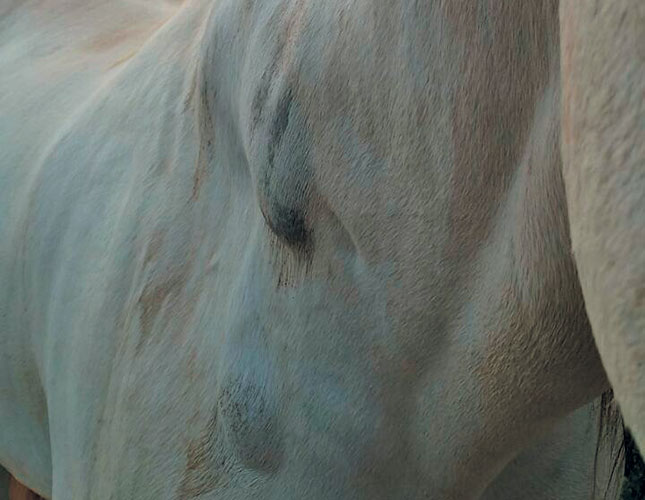
Photo: Kim Dyson
Every horse, from a gentle, ‘mobile garden ornament’ to a superb, highly bred showjumper, is susceptible to injury.
And an injury can mean the end of that horse’s career. Nonetheless, I firmly believe that a horse’s recovery is greatly influenced by the treatment it receives after an injury.
Traditionally, horses were stood in cold running streams or walked in the sea as an aid to the treatment (and prevention) of leg problems. Sea water, with its very high salt content, has an anti-inflammatory effect that assists healing and helps guard against further injury.
However, the water may not always be cold enough to affect the structures most often involved in injury. Today, cold hosing is standard for cooling down horses after exercise.
When soft tissue is injured from a cut, tear or concussive trauma, the body releases enzymes and proteins that cause the blood vessels in the vicinity to dilate and become more porous.
Lymphocytes are directed to the site of the trauma, passing through the porous membranes and entering the injured tissues to fight the infection. The extra fluids, carrying the oxygen and proteins for tissue repair, pool around the injured area, causing oedema (swelling).
This helps to immobilise or stabilise the injury.
Tissue damage also triggers the secretion of hormones. These cause much of the pain, so to prevent overuse of the injured limb.
Additionally, the increased blood flow to the site of the injury results in a rise in temperature in these tissues.
In short, pain, heat and swelling, the three main symptoms of inflammation, occur in varying degrees, depending on the site, nature and severity of the injury.
The downside of inflammation is that it may rage out of control and hinder the healing process, resulting in secondary tissue damage or hypoxic injury (due to lack of oxygen), which compounds the problem.
At the same time, blood vessels in the injured area are put under increasing pressure by the fluid build-up, thereby slowing the flow of blood and lymphatic fluid.
Epsom salts
The safest way to break the destructive cycle of secondary cell injury and swelling, or the formation of abscesses, is to use the horse’s circulatory system to wash away excess fluids that have collected in the tissues.
To do this, dissolve Epsom salts in cold water, and soak the affected area for 20 minutes.
While anti-inflammatory agents reduce swelling and heat, they may mask pain, confusing the diagnostic picture.
In addition, the use of corticosteroids to control heat and inflammation may shut down the entire healing process.
Exercise: take plenty of time
When the injury looks better, and your veterinarian thinks it’s safe, consider walking your horse, ideally on a hard, level surface. Start slowly and build up to an hour. Examine the legs and area of injury every day after the walk.
Once your horse has been walking for an hour a day for at least six weeks, and
the injury does not react by becoming hot or swelling up, carefully increase the exercise until you can saddle the horse again.
Kim Dyson breeds Arabians and Lusitanos, and has 22 years’ experience in holistic equine and human body work.













